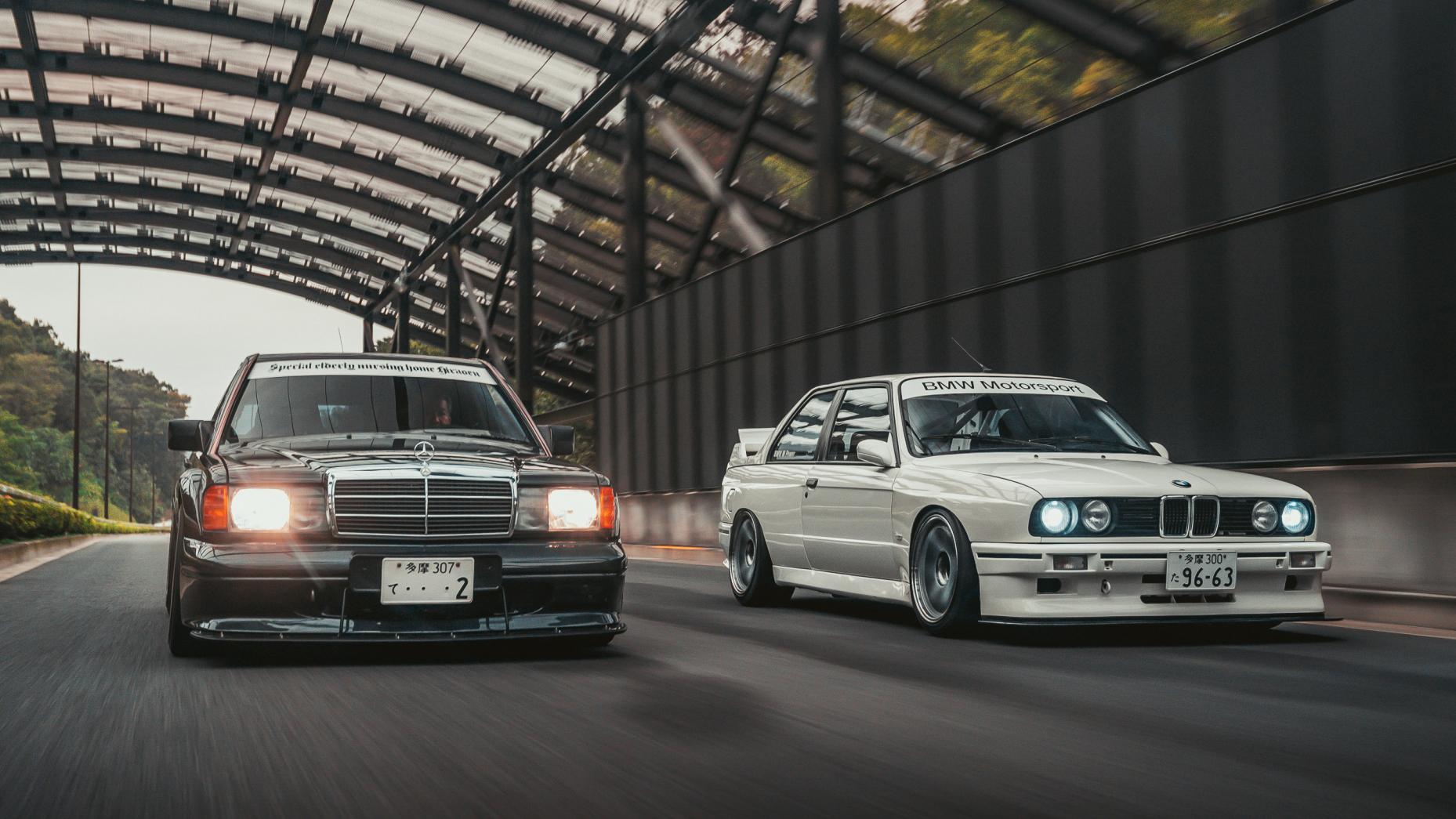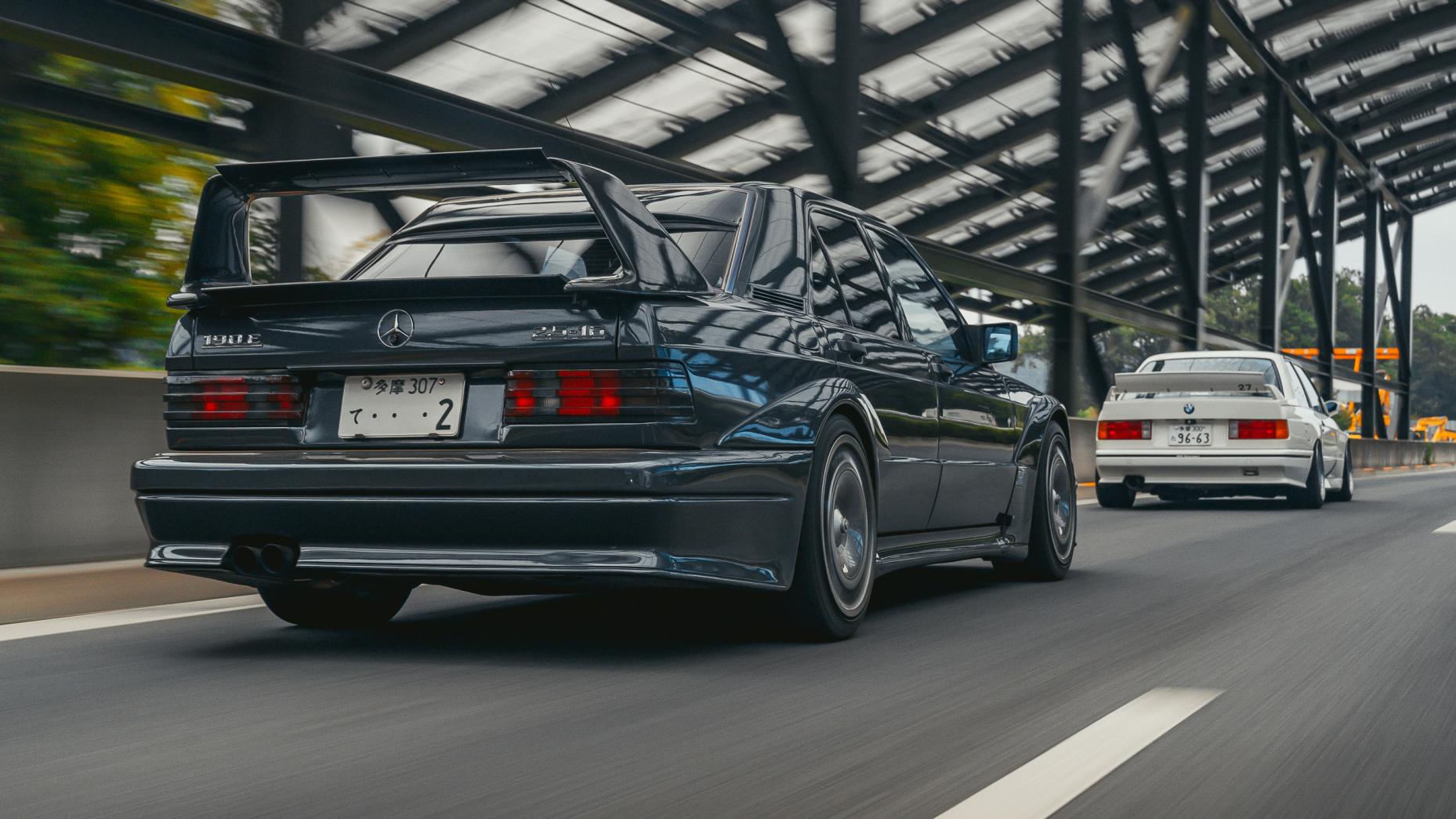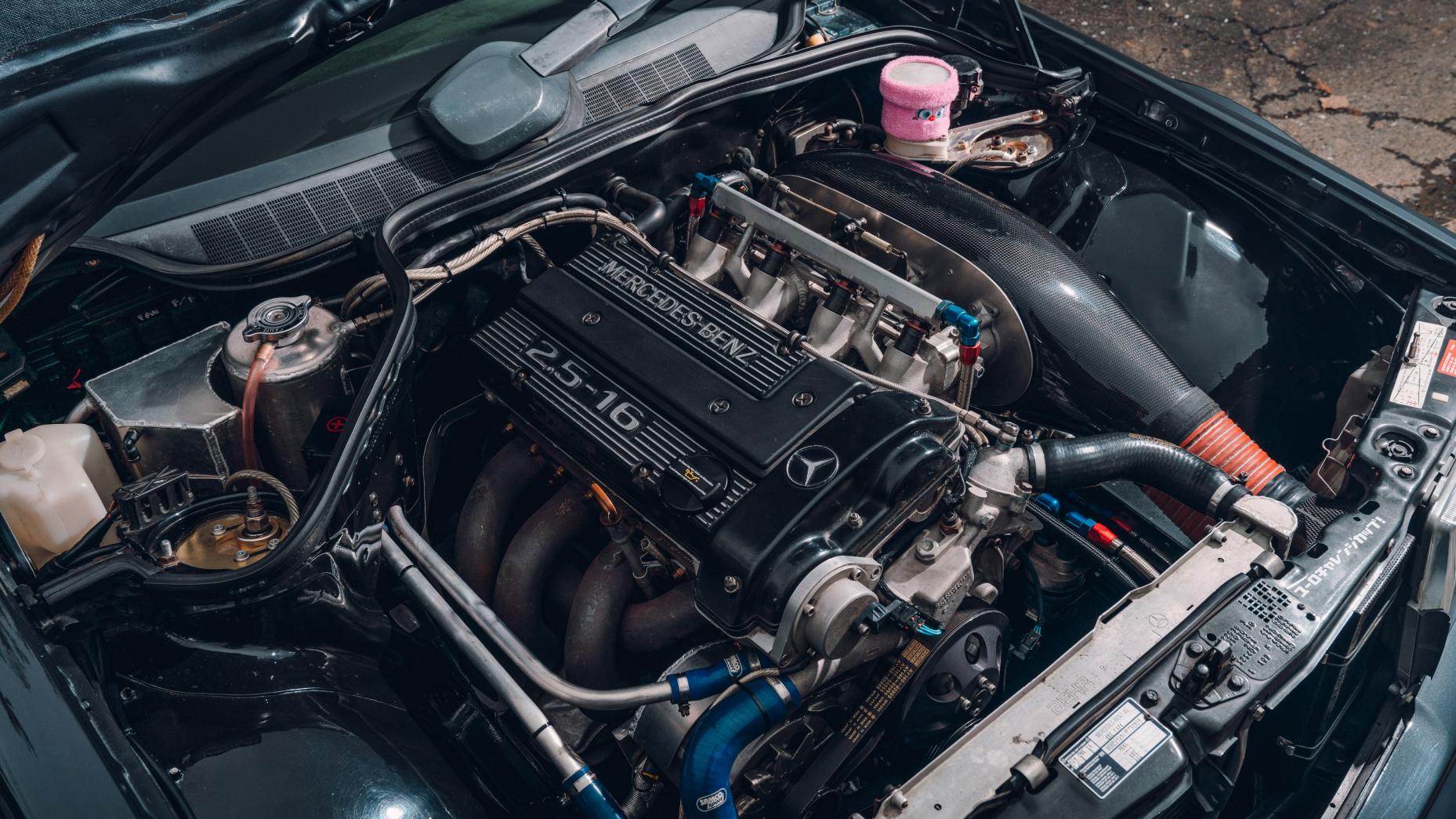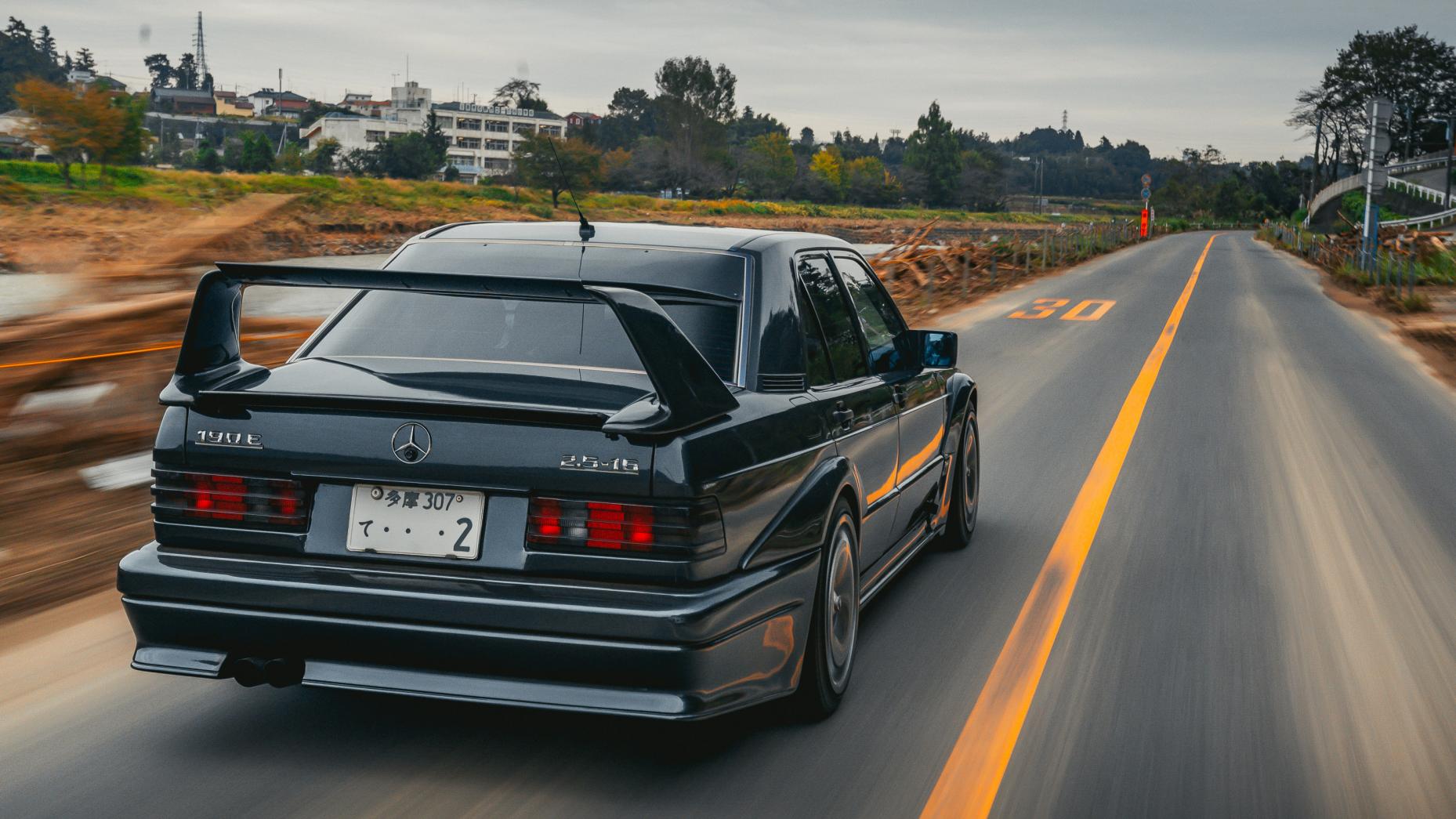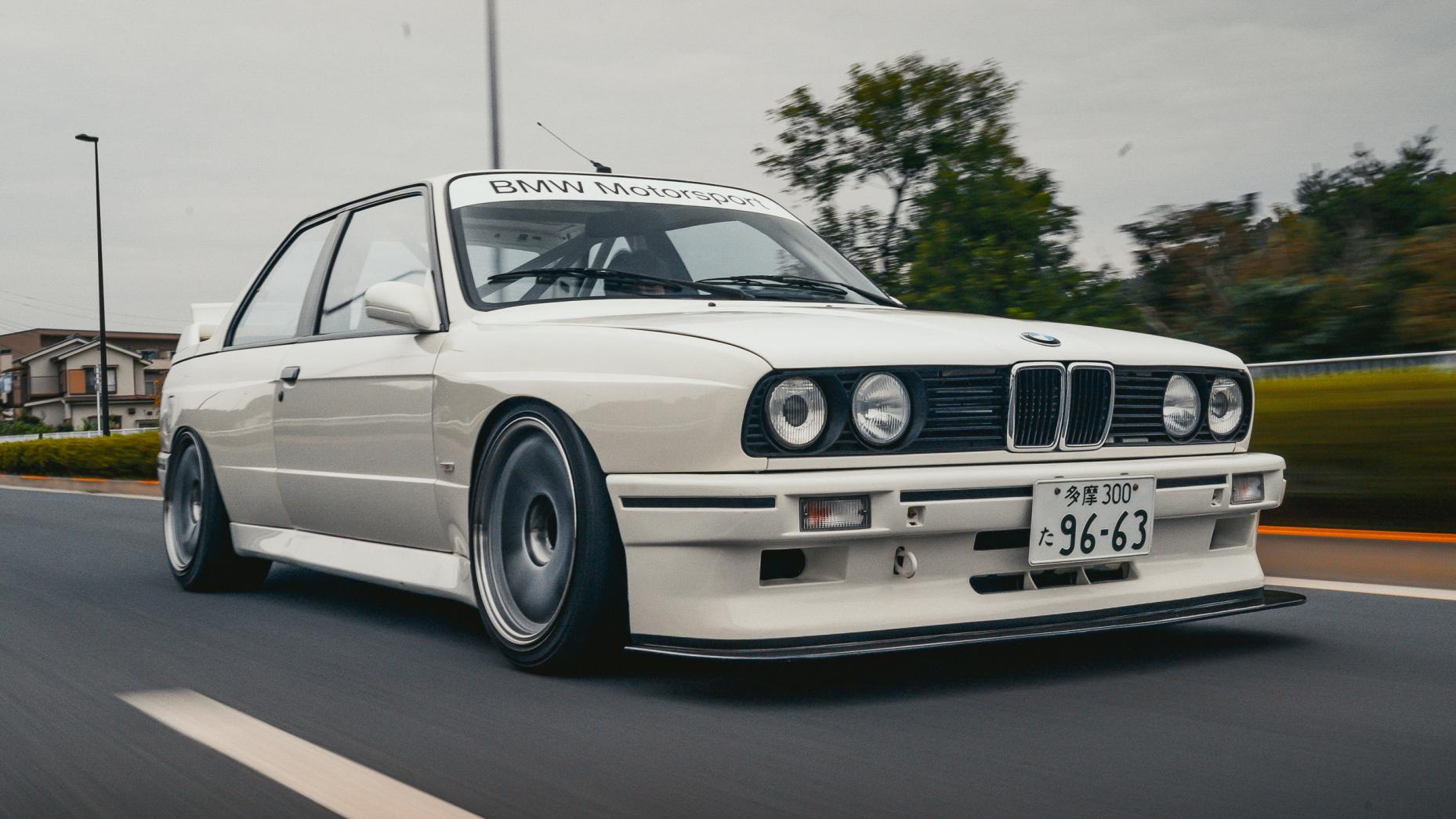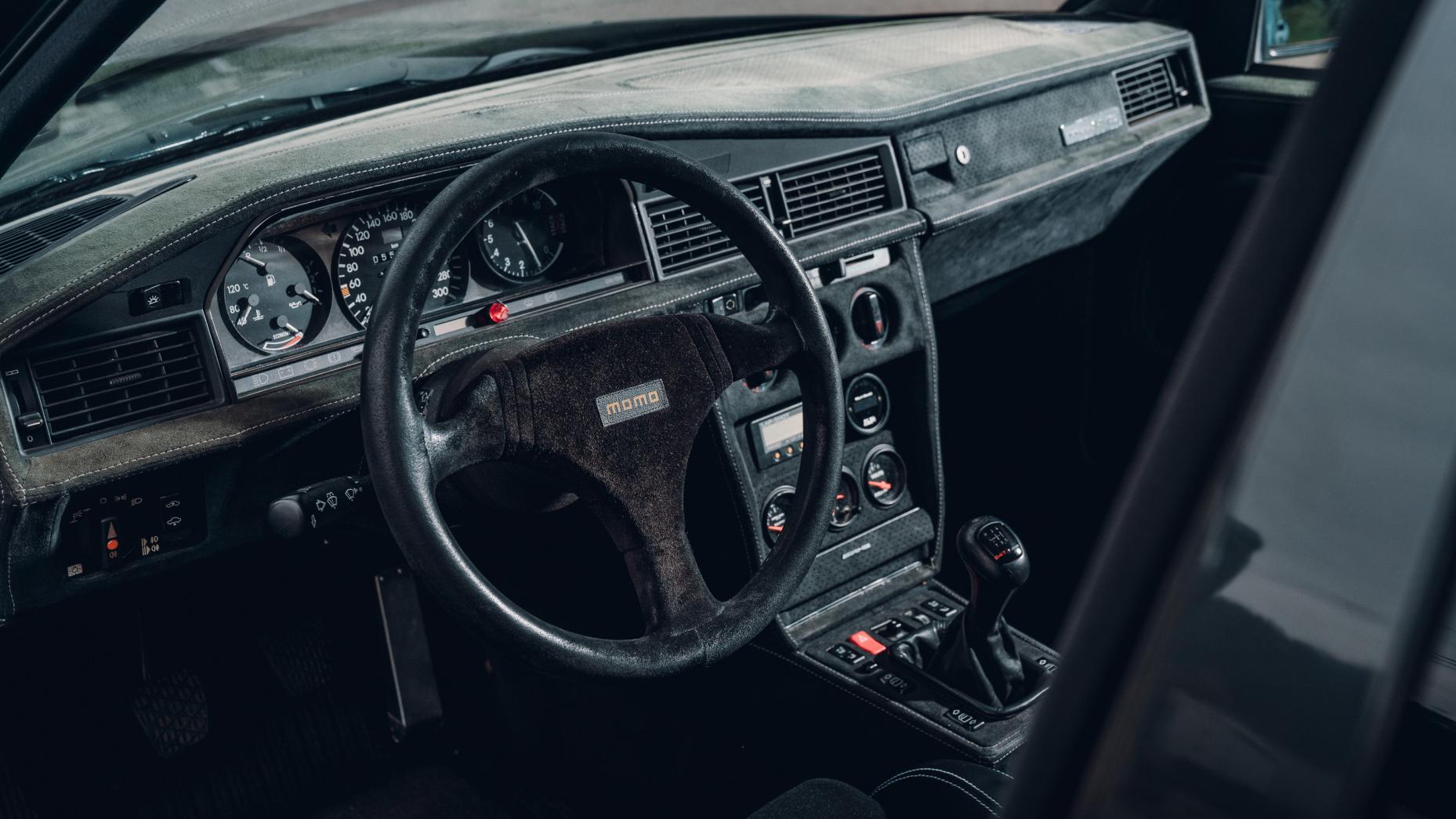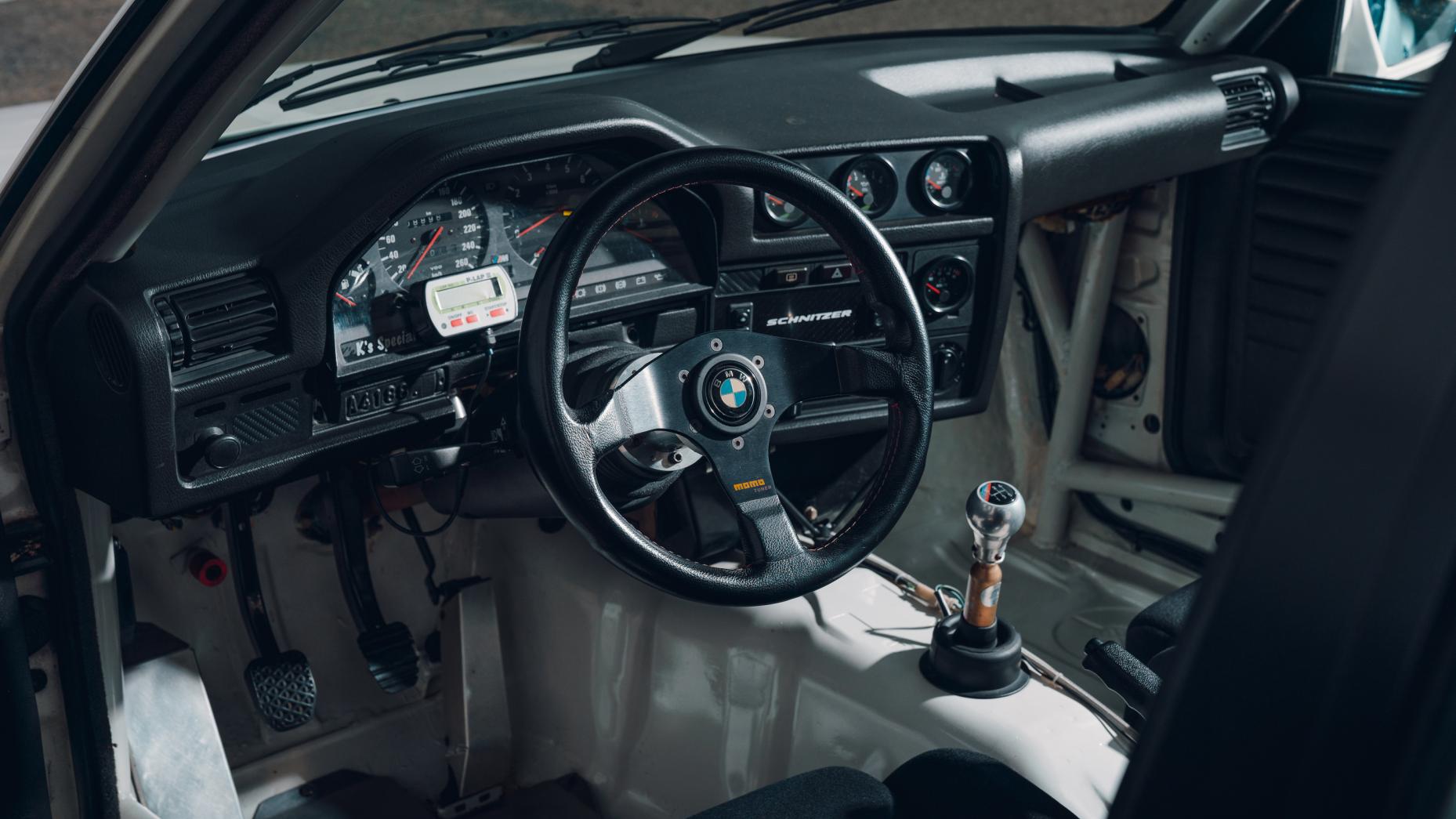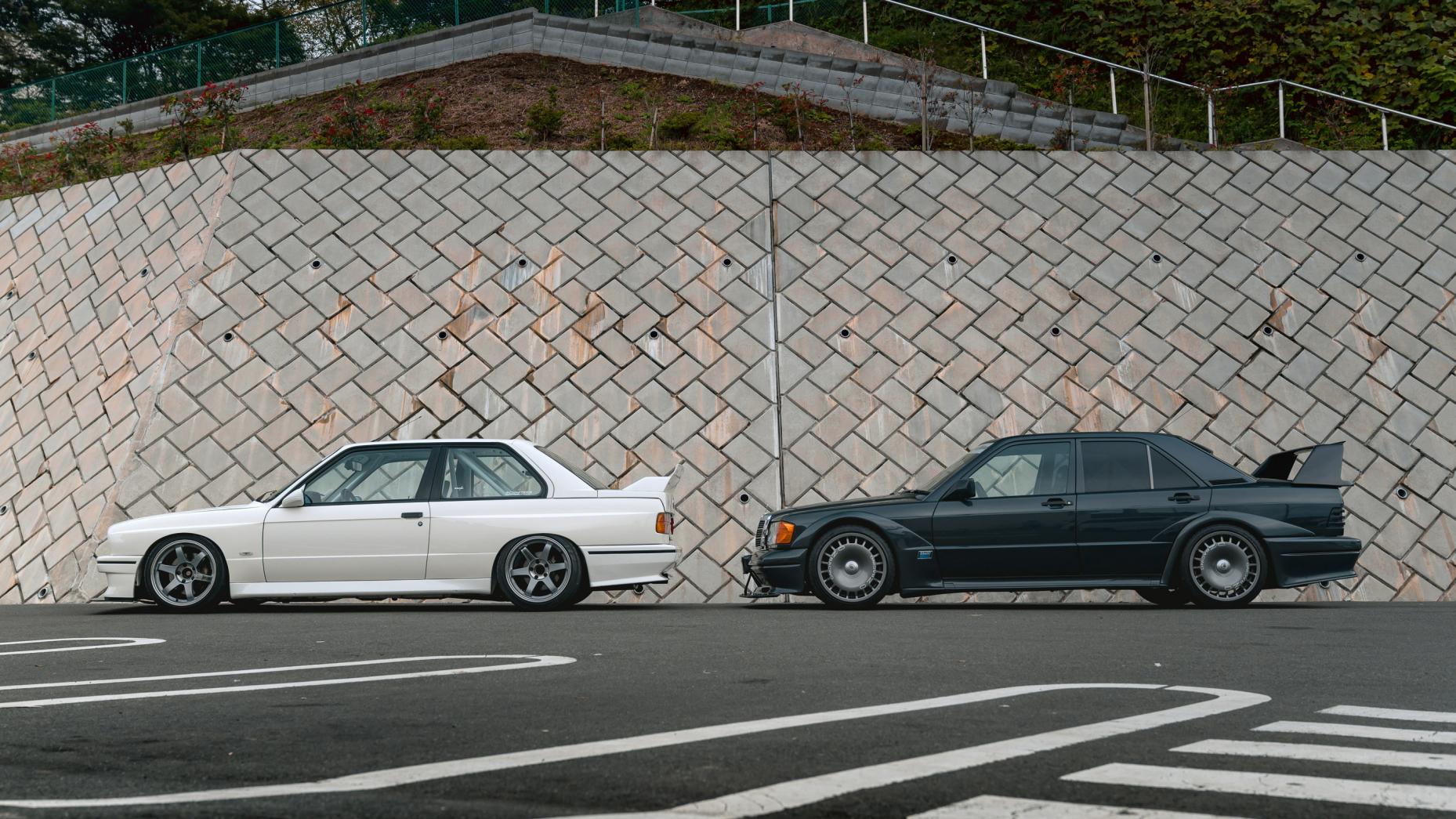Which is better, BMW E30 M3 or Mercedes 190E?
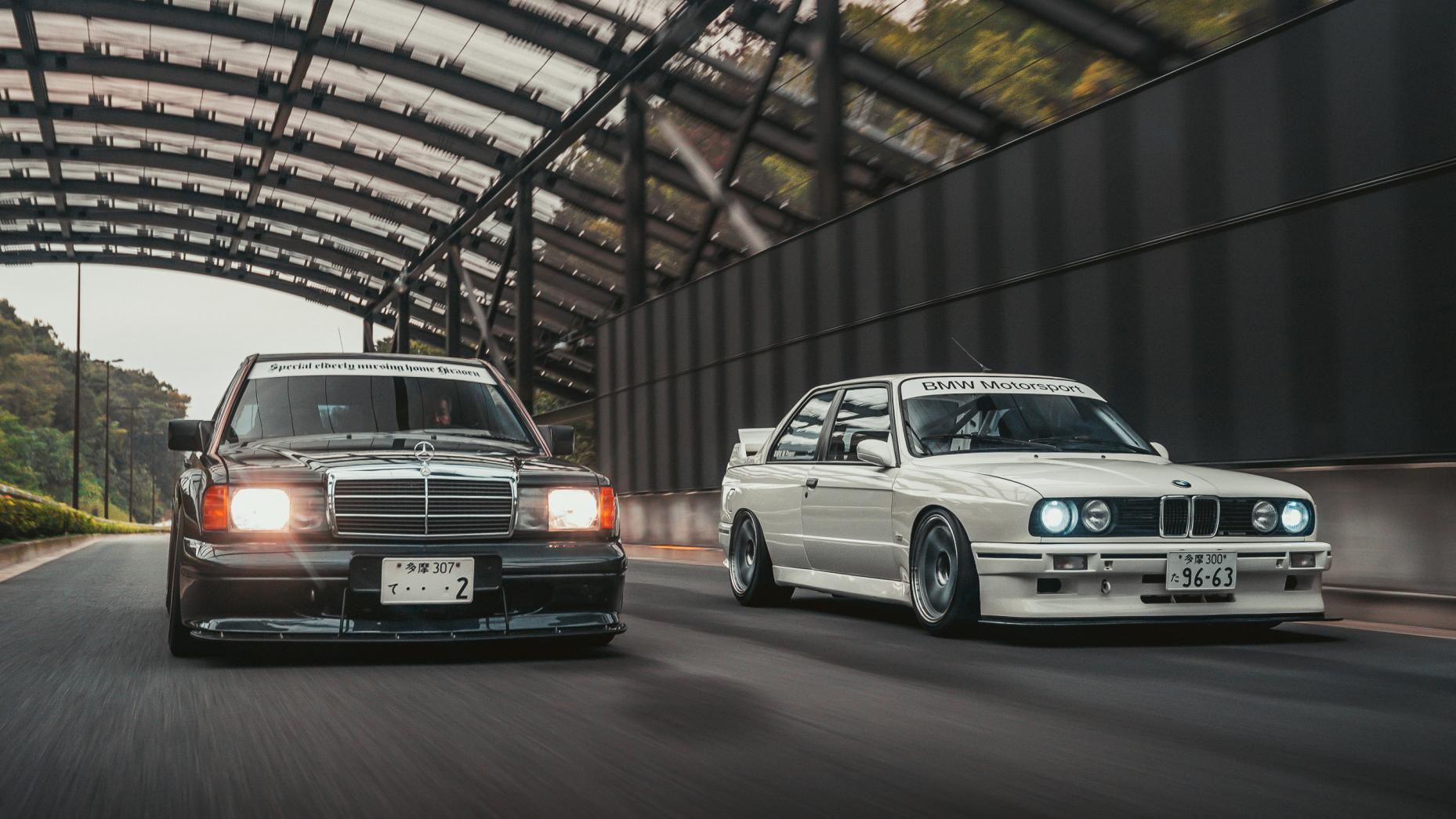
Mercedes-Benz versus BMW. It’s one of the age-old corporate head-to-heads that has been barging about since God was a teenager, a happy little war that has been fought on racetracks and roads, development centres and code farms. And it still goes on: these days it’s the M Division of BMW slugging it out with Mercedes’ own AMG for fast-premium dominance. But the one face-off that really got the fires burning happened way back in the late Eighties – when BMW launched the first E30 M3 to take on the Mercedes-Benz 190E 2.3-16. But given the benefit of hindsight and time… which really was best?
Words: Tom Ford // Photography: Mark Riccioni
The Merc was first in terms of a dedicated performance/homologation variant. Designed as a smaller, more affordable Mercedes, the bosses decided that the 190E needed some racing credibility and originally aimed it at rallying, gunning for naturally aspirated BDA-powered Escorts and the like. It turned to Cosworth to tune its 2.3-litre four (the 190 is sometimes called the 190E Cosworth – although not officially), managing a revvy, 16-valve motor with 182bhp and what looked like a killer set-up. An idea which immediately hit a brick wall when Audi unceremoniously changed the face of the competition with turbocharging and 4WD. Oops.
Rendered uncompetitive for rallying from the start, Merc went ahead with the launch of the homologation 2.3-16 in 1983, hitting upon a new idea – touring car racing. But while they were developing the idea of a competition car, the engineers got a bit bored, and decided to make a little bit of PR noise. As a starter, Mercedes ran a pair of 2.3-16s at full speed around Nardò’s high-speed bowl 24hrs a day for over a week, covering over 50,000km (31,000 miles) and proving the car’s reliability beyond question.
In 1984, the company then decided that the opening race at the then new Nürburgring GP circuit would be held in 20 identical 2.3-16s driven by a raft of contemporary F1 drivers including Hunt, Lauda, Prost, de Angelis, Moss, Reutemann, Keke Rosberg and Surtees, a race eventually won by none other than Ayrton Senna. All very cool. But it wasn’t until 1986 that the 190E made its debut in the German Touring Car Championship – the DTM.
It was at this point that BMW’s competitor, the E30 M3, was pretty much ready for production. Having been shown at the Frankfurt motor show in concept guise in 1985, it appeared in production trim in ’86 and hit sales in early ’87. Surprise, surprise, it shared the same basic motorsport-friendly ingredients as the Merc: a revvy four-cylinder engine mated to a dogleg close-ratio five-speed manual, rear-wheel drive and various body modifications to make it essentially a homologation special.
Only the bonnet and doors were the same as the regular production car, the windscreen more raked, the arches and rear spoiler more pronounced. BMW was going for Mercedes in a big way.
What followed was considered a heyday for touring cars. The Merc and the BMW ding-dong battled their way through the various series, responsible for some of the most spectacular, fun racing in history. Unfortunately, despite managing to overwhelm the M3 in a couple of cases, the Merc never really became as dominant in racing as the all-conquering M3. In terms of stats, the BMW really does hand out a smackdown, winning various European race series several times over the following years. In fact, it took the appearance of the faster, larger-engined 190E 2.5-16 Evo II in 1992 – in the hands of a chap called Klaus Ludwig – to take the DTM honours from the dominant BMW.
Why? Well, even in road trim, the BMW was lighter and more powerful than the built-to-last Mercedes Benz. While the M3 is pin-sharp and aggressive – especially in the later Evo specification – the 190E didn’t get excessively hardcore until the Evo II much later in its life. The Mercedes is a little more comfortable, the pendulum swung closer to a usable daily fast car than the BMW’s road-legal racer – even being available as an auto, not something offered by BMW in the M3. Despite being very close in terms of layout, specs and power, the 190E 2.3-16 ended up being homologation lite, where the BMW was always designed for one purpose.
And they’re probably more numerous than the legends would have you believe: both cars eventually ended up having decent production runs, both rolling out the even rarer ‘Evo’ variants used to homologate more extreme motorsport additions. Over 18,000 M3s eventually made it out to the streets (including later developments), and – even though most seem to think the Merc is a rare beast – the company actually built some 20,000 2.3s, 5,000 of the later 2.5-16 and 502 each of the Evo models. Which are the ones to have now, incidentally.

Which means that even though these two cars are comparable in most ways, fought on the same battlefield and ended up unerringly referred to in the same breath, they don’t really match up. BMW dominated the contemporary motorsport fight, and the M3 was faster, lighter and more aggressive on the road. But while both were criticised for being a little outré when they were released (hard to believe now), the Merc still has that dash of subtle magic about it. While the M3 became a kind of populist poster-boy, the 2.3-16 has ended up a slightly less well-known hat tip for those in the know. A bit less obvious, just that little bit cooler. So which is best? In objective terms, it’s the E30 M3 all day. More subjectively… well, we’ll leave that up to you.
